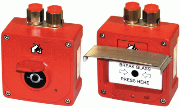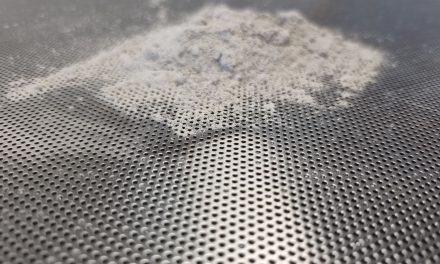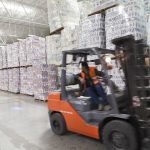 Managing director of Clifford & Snell, Trevor Gage, takes a look at how the manufacture of safety warning devices has developed to conform with increased legislation
Managing director of Clifford & Snell, Trevor Gage, takes a look at how the manufacture of safety warning devices has developed to conform with increased legislation
So many aspects of modern day living are governed by legislation and, as such, health and safety is an ever growing market sector, with numerous international standards and approvals which govern the legal parameters for public sector buildings, mass transportation systems, educational and commercial facilities as well as industrial complexes.
BASEEFA in the early 1970s certainly dominated UK standards and certification at a time when North Sea oil and gas were providing the British economy with huge revenues. To allow UK manufacturers of fire alarms and systems to take advantage of the lucrative global markets, a decision had to be made to commit towards major investment in order that their products could gain the crucially important North American approvals. This strategically opened markets both in the US and Canada as well as the oil producing countries in South America and the Middle East, where North American standards are also recognised.
New legislation has to be constantly monitored by manufacturers and the implementation in Europe of EN54 Part 3, for example, was essential for all applications covering fire alarm systems. Although there has been a concerted effort to consolidate the certification of various European bodies, to help simplify what is often a complicated process, it still remains the responsibility of the manufacturer to manage this task across all products in order to ensure that the necessary certification is achieved. This effectively means that manufacturers still have to set aside considerable budgets to gain approvals to allow their products to be sold throughout Europe and beyond – where duplication of testing will inevitably take place within the various test houses, placing financial pressure back onto the manufacturer.
Within the framework of European certification for hazardous area products, the manufacturer also needs to consider the ATEX European directives for dust as well as gas. It is now generally accepted that almost all industrial dust can be considered as a potentially explosive environment and therefore, industry must be protected from its effects.
Certainly, with the considerable expansion of the oil and gas markets within the Russian territory, few manufacturers can now ignore GOST approvals. The introduction of the international approval IECEx back in 2003, was aimed at facilitating international trade in explosion-proof equipment while maintaining the required level of safety and a reduction in the need for testing, as well as bringing down certification costs for the manufacturer within a common platform for all markets to work from.
 Research and development
Research and development
Semiconductors have enhanced the development of technology in recent decades within most market sectors, with fire and security and general signalling being no exception. The first electronic sounder was designed in 1967 by London-based Clifford & Snell, now part of the R.Stahl Group, and was one of the earliest companies to become involved in safety warning systems.
Incorporating chip technology within the alarm and sounder design has allowed manufacturers to feature an array of internationally recognised sound tones and provide numerous frequency options. The incorporation of long life, high power LED technology, enables manufacturers to improve their products with the introduction of features which would not otherwise be available using previous technology. As components reduce in size and become ‘smarter’ in their ability to handle data, then the component population reduces and equipment becomes more compact and competitive for the end user.
Certainly, advancement in materials technology has vastly enhanced the designs of alarms and sounders, particularly in the hazardous area and intrinsic safety sectors. The weight savings that have been achieved by removing heavy and expensive stainless steel equipment from oil and gas platforms and replacing it with GRP (glass reinforced polyester) have been considerable. This has lead to much reduced transportation and installation costs – together with savings made in terms of capital investment. Furthermore, the use of GRP product extends the product life, and coupled with minimal maintenance overheads, results in a high performance product at a fraction of the cost to the customers of both onshore and offshore facilities within hazardous zones.
It is estimated that the total cost for installing a complete alarm system can be divided into two – approximately one third for the cost of the product and up to two thirds for the cost of installation. Clearly a reduction in installation costs would benefit most customers and towards this end, manufacturers have provided various solutions. One such example is the incorporation of two devices within one product where a single enclosure offers both visual and auditory alarm signals. This is highlighted in the Yodalex range from Clifford & Snell, which takes a single enclosure, and with the addition of various other component parts, can be transformed into a sounder, strobe or better still, a fully integrated combination unit, adding value and flexibility to the end user.
In addition, flame retardant materials are now an essential part of the approval process for some markets. The use of modern materials in conjunction with good design principles can greatly increase the product’s performance and life expectancy, particularly in harsh environments such as coastal or offshore areas, where exposure to the elements can substantially reduce the performance of a product.
Modular construction of fire alarms and beacons can facilitate cost reductions for customers and offer a wide product selection to industry. From the manufacturer’s viewpoint, it also enables great flexibility when a customer requires product modification to be made in order to meet their requirements in a specific field application. Furthermore, it enhances the development process, shortens the development cycle and can add considerable value to the business, whilst servicing the needs of the market place with a modern, competitive and flexible approach.
Distribution and representation
A coherent global distribution network is often the best route to meet customers’ needs locally. Some manufacturers have gone to great lengths to secure trustworthy international partners who carry the same ethos that they themselves aspire to in servicing customer needs. For instance, clear market sectors exist in the Middle East for oil and gas, covering the petrochemical industries where hazardous area and intrinsically safe equipment is essential. In the Far East, for example, Singapore, north into China and Korea, forms a base for some of the most lucrative shipping construction and refurbishment contracts for signalling products. To have local knowledge and expertise in these areas is essential for servicing customers’ requirements, both swiftly and efficiently.
The future
In spite of the current global recession, there exists excellent growth opportunities, both now and for the future. A key factor in this is for manufacturers to continue to focus on the development of new technologies and to invest in new products, as this will provide the conduit in the months and years ahead to move forward and flourish as the market expands. There are many examples of this as manufacturers develop and launch new products into the market to ensure the scope of their business continues to expand and that the market requirements and changing needs of the industry are fully met.
An announcement by the United Nations Economic Commission for Europe has endorsed the use of the IECEX certification system for the verification of product compliance with international safety standards in hazardous areas. This vital endorsement will offer adequate risk mitigation, thereby reducing costs and paperwork whilst its implementation will crucially dispense with the costly duplication of equipment assessment and accreditation costs that manufacturers face at present. Whilst continuing to address the global needs of our ever changing and developing market place, product compliance for international certification remains paramount and investment in conformity to IECEx standards remains an important criteria for both existing and future product developments within our global business.





